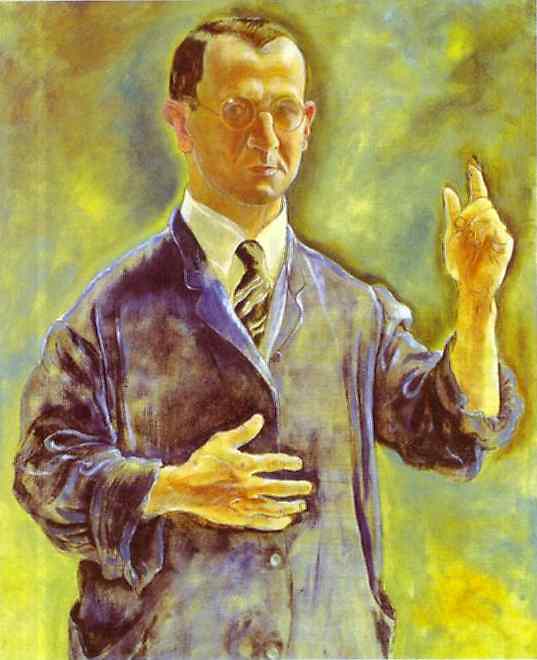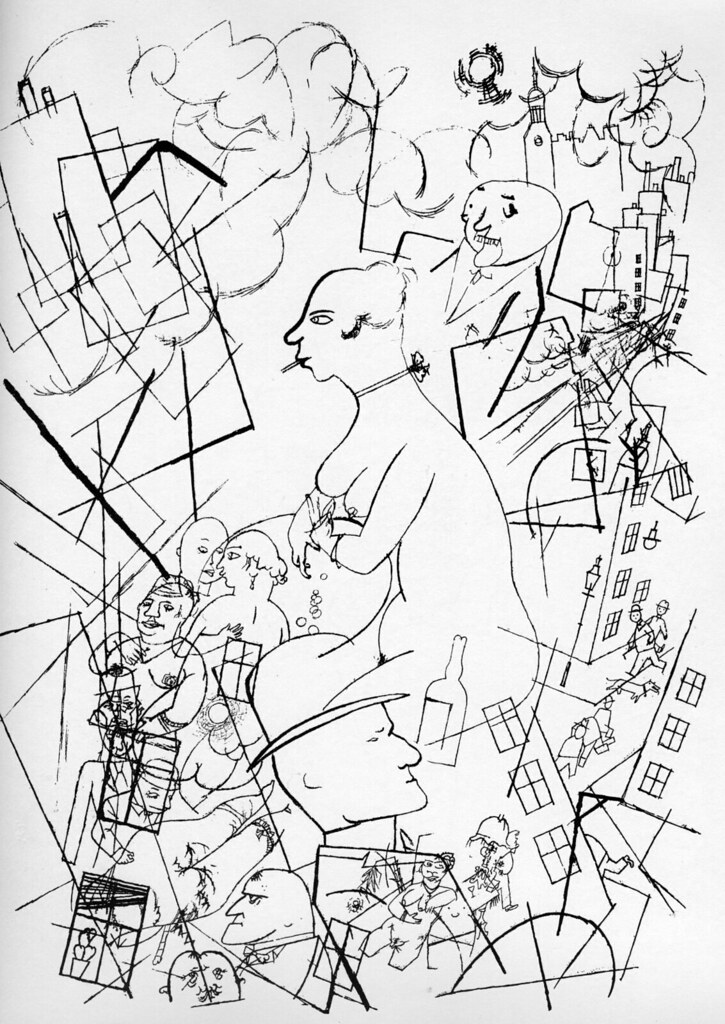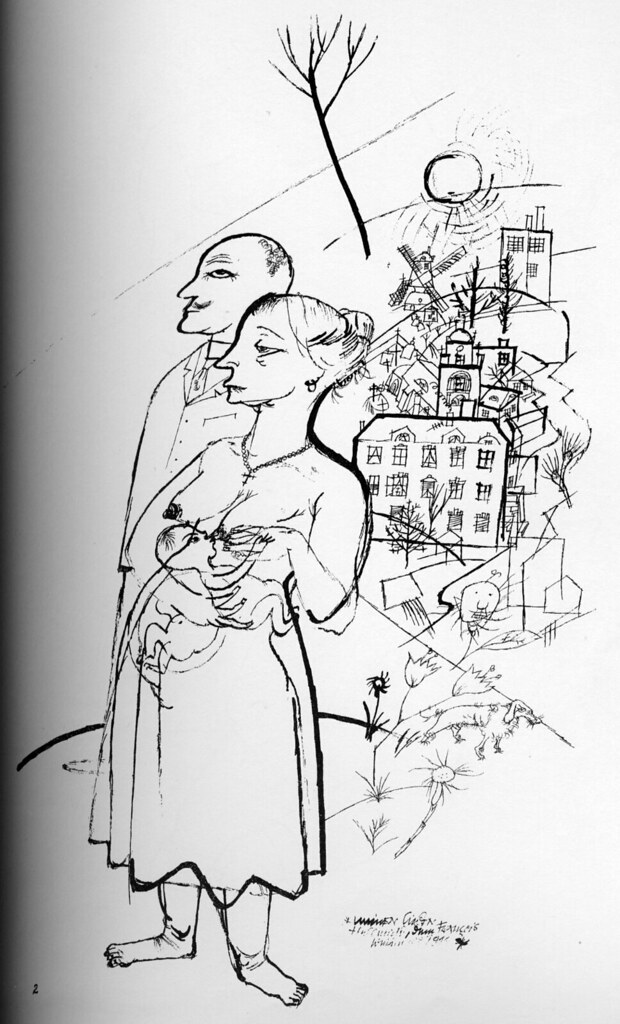A self portrait by George Grosz.
George Grosz is most famous for the works he completed during the Weimar Era. His harsh and satirical art criticized society often with sharp lines and grotesque depictions of people. His personal outlook on society was just as extreme as his artwork.
“What I had discerned from the pre-war period could be summed up as follows: human beings are swine. All the prattle about ethics is a swindle, intended for the stupid. There is no point to life than to satisfy one’s hunger for food and women. The soul does not exist.” -George Grosz
This quote is consistent with the images portrayed by Grosz. Often in his work, women are ugly and dirty, men are pursuing them regardless, and all while destruction and war happen in the background.
“Eva” by George Grosz, 1918
“Family” by George Grosz, 1916
Born Georg Groß in 1893, the artist decided to change the spelling of his name in 1916 to George Grosz as his way of protesting German nationalism. Adding an e to the end of his first name George and removing the German letter ß from his last name and replacing it with the equivalent sz made his name appear less German without actually changing the pronunciation.
Grosz joined the Communist Party of Germany (KPD) in 1918, and an artists’ association called the “November Group.” Grosz was charged with defaming the army in his album “Gott mit uns. In 1924 he was charged for offences against public morality in his album “Ecce Homo.” “Shut up and keep serving the cause” was drawn by Grosz in 1928 and for it he was accused of blasphemy.
In 1932, Grosz left Germany to teach at the Art Students League in New York. He taught there until 1936. During his time in the United States, his works ceased to attack society anymore. He wrote sarcastically in his autobiography “Ein kleines Ja und ein Grosses Nein” (“A Small Yes and a Big No”), “My motto was now to give offence to none and be pleasing to all. Assimilation is straightforward once one overcomes the greatly overvalued superstition concerning character…The second rule for fitting in is to think everything beautiful! Everything – that is to say, including things that are not beautiful in reality.”
Works Cited
“George Grosz Biography, Art, and Analysis of Works.” The Art Story. N.p., n.d. Web. 10 Apr. 2017.
Grosz, George, and Lola Sachs Dorin. A little yes and a big no; the autobiography of George
Grosz. New York: The Dial Press, 1946. Print.
Mataev, Olga. “Olga’s Gallery.” George Grosz. Biography. – Olga’s Gallery. N.p., n.d. Web. 05
Apr. 2017.


